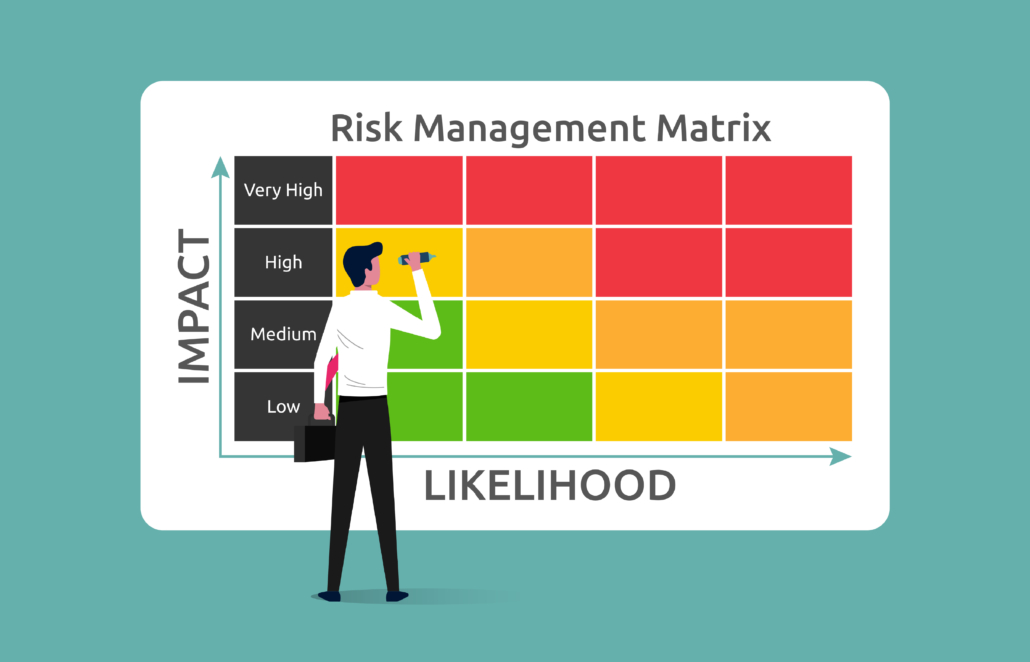The 5 rules of risk management for businesses
Whether launching a new product or growing a company’s footprint, managing risks is part of growing a business.

Economic worries, supply chain bottlenecks, staffing issues and cybersecurity threats mean businesses are navigating more challenges than ever before.
Developing a strategy to manage risks effectively is essential for businesses to succeed and thrive, especially in a more challenging market. But if you or your client follow these risk management rules for businesses, it will help you get started.
Do: Build a powerful risk management team
Having a team in place is the key to pinpointing the risks facing your (or your client’s) business. The risk management team identifies concerns, and then supports implementation strategies to deal with them.
Start by defining roles and responsibilities within the business for managing financial and operational risk — and establishing accountability. Set out who is responsible for implementing, overseeing and measuring your risk management process in-house, or decide if you would rather seek the help of external contractors.
Did you know? Whether internal or external, accountants can be valuable members of the risk management team.
The risk management team will have the power to:
- Make informed decisions based on risk assessments
- Evaluate the potential impact on the organization’s financial health
- Align decisions with business plans
Employees involved in a risk management role must have the necessary skills and knowledge, either from experience or through courses and training programs in risk management.
Don’t: Underestimate potential risks
Once the risk management team performs a risk assessment, it’s important to be realistic about risks that could threaten the business. These may include:
- Industry-specific risks
- Market or economic risks
- Cash flow risks
- Technological risks
- Reputational risks

When evaluating risks to determine priority, look at the impact – how badly it would affect your business – and the likelihood of it happening. The top-right corner of the matrix are the highest-priority items requiring robust risk management strategies and mitigation measures.
At the same time, as one survey found, small and medium businesses may underestimate the threat of certain risks. For example, 60% believe they are too small to be targeted by cybercriminals.
Being realistic about the likelihood of specific risks affecting your business is a fundamental step in financial risk management — and will help you craft appropriate courses of action. As Export Development Canada explains, it’s important to prioritize the risks you’ve identified to determine the likelihood of an event happening, direct your energy toward the most immediate issues and analyze how they might impact your business operationally and financially.
Do: Be prepared to mitigate risks
Taking steps to avoid risks altogether might seem like the ideal course of action, but as the Corporate Finance Institute notes, this isn’t always possible. Sidestepping risk can also have financial or strategic consequences, like missing growth opportunities and failing to innovate. No one wants to be Blockbuster passing on Netflix.
Manage potential concerns using risk reduction or prevention strategies. To mitigate cybersecurity threats, for instance, many businesses implement ongoing employee training, perform regular equipment maintenance and scans, and purchase additional insurance.
It is also essential to have adaptable contingency plans to manage adverse events effectively when or if they happen and limit potential damage.
For example, with flexible tools like invoice factoring at your disposal, small and medium businesses can access the working capital they need to face business challenges as they arise — providing the financial cushion to weather cash flow concerns.
Do: Bring it all together in a plan
Once you’ve established the risks your business is likely facing, it’s time to document everything via plans and procedures.
Plans should detail the tools, processes and people your business has in place to respond to identified risks and unexpected events.
It’s no secret that many businesses were unprepared for the ongoing supply chain interruptions starting in 2020. A risk management plan for a similar interruption could include broadening your list of suppliers or boosting your working capital.
Don’t: Set it and forget it
Financial risk management is an ever-evolving process for small and medium-sized businesses that requires continuous monitoring of risk factors. This involves tracking changes in market and industry conditions, assessing the effectiveness of your risk mitigation and management strategies and being aware of emerging risks.
With a clear risk management strategy in place, you can not only lessen the chance that business risk will catch you off guard and impact your bottom line, but you can also build trust with your customers and team, who will be confident that you can handle any adverse events that come your way.
Want to learn more about how alternative funding can help overcome risks? Contact a Liquid Capital Principal today.






